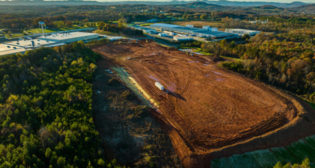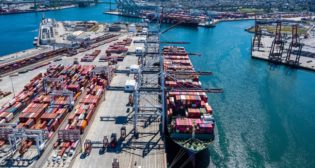
From the Editor: “Gussied-up Prairie Schooners”
Written by Nebraska Digital, administrator  Those of you who have been involved in the high speed rail business for a while may recall, with acid reflux, Herb Kelleher, the man who, with some creative legal shenanigans, single-handedly succeeded in killing the Texas TGV in the early 1990s. Let’s go back to Don Itzkoff’s “High Speed Currents” column in the July 1991 issue of Railway Age (p. 14) for some perspective:
Those of you who have been involved in the high speed rail business for a while may recall, with acid reflux, Herb Kelleher, the man who, with some creative legal shenanigans, single-handedly succeeded in killing the Texas TGV in the early 1990s. Let’s go back to Don Itzkoff’s “High Speed Currents” column in the July 1991 issue of Railway Age (p. 14) for some perspective:
“[Its] emergence into the national spotlight parallels a new, broader acceptance of high speed ground transportation as a significant future travel option for Americans. But recent events in Austin . . . teach a lesson in reality as well—that changing the entrenched domestic, political, economic, and institutional order to accommodate new high speed ground transportation systems will not be easy.
“In Texas, the opposition came from Southwest Airlines. Southwest, which itself was an upstart carrier when it challenged the established majors two decades ago, tried to prevent both high speed rail franchise applicants, Texas TGV and FasTrac, and the Texas High Speed Rail Authority from continuing the application process (in part on the terms that the Authority’s directors were improperly staggered) and succeeded in postponing hearings for a week. Southwest attorneys also interposed literally hundreds of objections to evidence introduced by both applicants and other parties, creating such disruptions that FasTrac moved that Southwest be fined for abuse of process. At the Authority’s hearing that commenced on March 25, a small army of Southwest lawyers assaulted the applications of both prospective franchises on every conceivable front.”
It gets better: “Not content to leave the battle solely to his lawyers, Southwest Chairman Herb Kelleher waded into the fray, too. Kelleher derided high speed trains as ‘gussied-up prairie schooners,’ called the concept a ‘somersault backward into the 19th century,’ and threatened to move Southwest’s corporate headquarters out of the state of Texas entirely. The Texas High Speed Rail Authority ultimately rejected the arguments of Kelleher and his lawyers, voting unanimously to award the franchise to Texas TGV. But Southwest drew blood through its campaign of attrition, and the battle may only be beginning.”
Kelleher proved quite shrewd. He probably knew that, just like the TGV’s effect on French domestic air service, 200-mph trains streaking across the Texas prairies would send his airline, which at that time was still a mostly regional carrier, crashing and burning. His tenacity paid off for him. The Texas TGV died, as did other high speed rail projects, such as Florida Overland eXpress (killed by another Texan).
It has taken nearly 20 years to overcome the entrenched order that Don Itzkoff so eloquently talked about in these pages. We now have an enlightened Administration in Washington (thank you, Mr. President, for this month’s “leaner-meaner-cleaner” cover line), and a supportive Congress. It’s going to take a lot more money than Obama’s initial $13 billion to build a high speed network in this country, but it’s a good start, $13 billion more than we’ve ever had.
Favorable opinions on high speed rail are coming from unexpected places. Commenting on the state of America’s automotive industry in the July 2009 issue of Car & Driver Magazine, David E. Davis Jr.—the dean of automotive journalists—said: “If I were [Obama’s] car czar, I would strongly suggest that we can have no national automotive policy until we have fully comprehensive transportation and energy policies. This is serious business. We desperately need high speed transcontinental trains based on the European and Japanese models, just as we need some modern version of the old interurban rail systems.”
I had to take off my bifocals and hold Car & Driver up to my nose to make sure I wasn’t imagining things, especially since I’d gotten used to reading silly anti-passenger-rail rants from (thankfully) now-retired columnist Patrick Bedard, who once called the New York City subway the “electric sewer.”
Then there’s this from Association of American Railroads President and CEO Ed Hamberger: “America’s freight railroads support the goal of increased passenger rail investment. It’s good for our economy and the environment when more people and goods move faster by rail.” Our privately owned freight rail network, he said, “is the literal foundation for high speed rail in America.” And of course (and we agree): “We are critical stakeholders that need to be engaged from the very beginning of project planning and development. Passenger and freight efforts to grow and expand must complement, not compromise, one another.”
Be sure to attend our 16th Annual Passenger Trains on Freight Railroads Conference, Oct. 19-20 in Washington D.C. Click here for more information.
![]()



